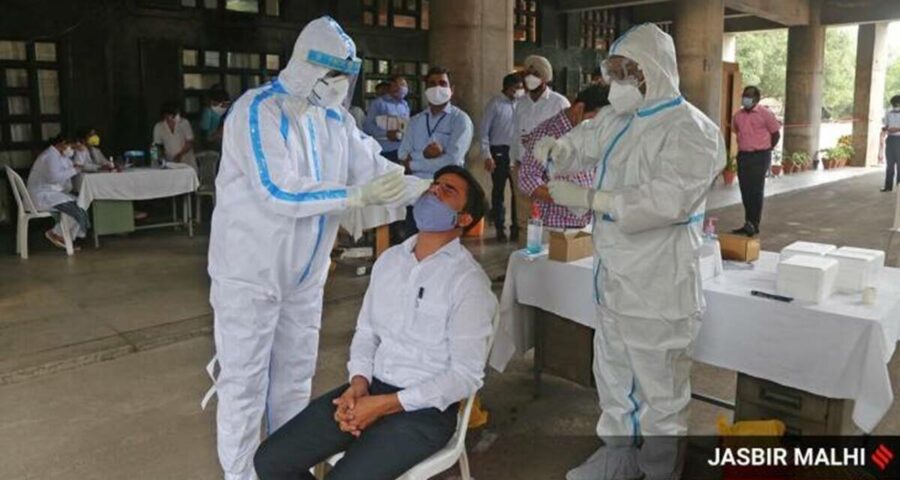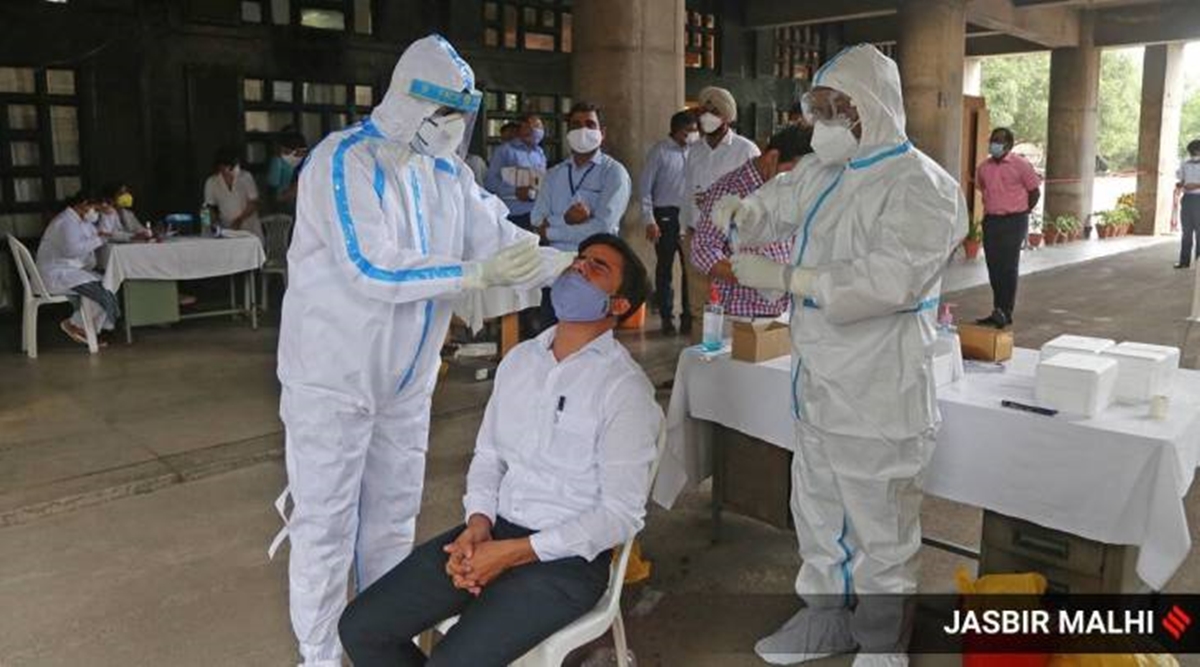With Chandigarh reporting a high of 294 cases on Saturday and 81 per cent of the 401 samples sent by the Punjab government for genome sequencing having tested positive for the UK variant of COVID-19, doctors are apprehending that the surge in cases here could be because of the variant.
“The rate at which the numbers are increasing is quite alarming and it also suggests that this wave has a more infectious strain. The huge surge in UT cases along with Tricity may also be a fallout of the same characteristics. For such a surge in number of cases, the variant must be established in the community and cannot be explained with travellers alone,” said Dr Zafar Ahmed, Senior Consultant, Critical Care, Pulmonology and Chest and Sleep Medicine, Fortis Hospital.
With Chandigarh reporting a high of 294 cases on Saturday and 81 per cent of the 401 samples sent by the Punjab government for genome sequencing having tested positive for the UK variant of COVID-19, doctors are apprehending that the surge in cases here could be because of the variant. Chandigarh, says Dr Amandeep Kang, Director, Health Services, is adjacent to Mohali and other districts of Punjab, like Ropar and Fatehgarh Sahib, and with many NRIs visiting Punjab, there is a risk and possibility that the variant could be in Chandigarh.
“Our samples for the month of March have gone for testing for the new strain and results are awaited. With the variant more infectious, we need to be extra cautious and take all precautions and stop unnecessary activity.”
The second wave, says Dr Ahmed, has now become a reality for our region and country, and has come with a change in its presentation, progression and virulence. “In contrast to last year, now we are witnessing patients coming with shorter duration of symptom onset to presentation to hospital. They have symptoms of fever and breathlessness more now than loss of smell and taste. They have less myalgia. Most of the patients are presenting between fourth and 10th day of illness. Another peculiarity is early onset of oxygen requirement. Last year, we saw what we called Happy Hypoxia where patients remained asymptomatic even at low oxygen saturations, but this is less this year. So far we are seeing patients responding well to treatment. The rate at which the numbers are increasing is quite alarming and it also suggests that this wave has the strain more infectious.”
Padma Shri Awardee Dr Sanjeev Bagai says the four key concerns of the new variant(s) are viral transmissibility, disease severity, reinfection rate, escape vaccine-induced immunity, low RT-PCR pick-ups and is 43 to 82 per cent transmissible.
In a recent interview, Prof Pankaj Malhotra, Department of Internal Medicine, PGI, had clarified that while it is said that the mutations or variants are not responsible for the rise in cases, he believes the variants are the cause of the super-spread here. PGI director Jagat Ram agreed that because of the city being a central point for people from across the region, there is a high chance of spread of infection from other states. “The key to check spread of infection is following appropriate behaviour and vaccination.”
Source: Read Full Article


